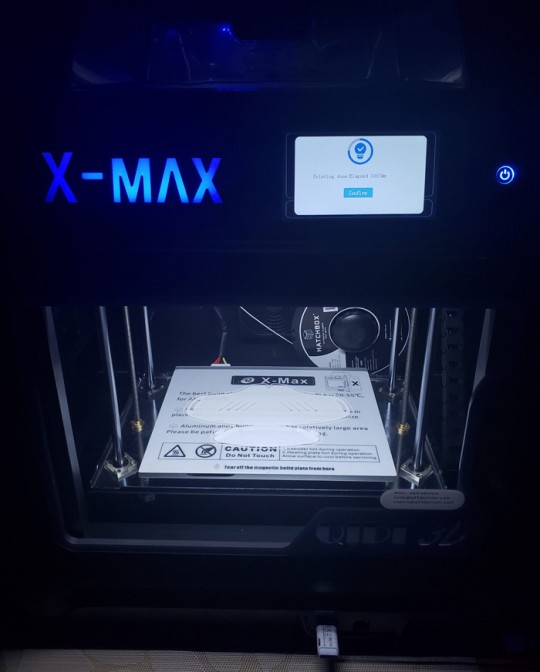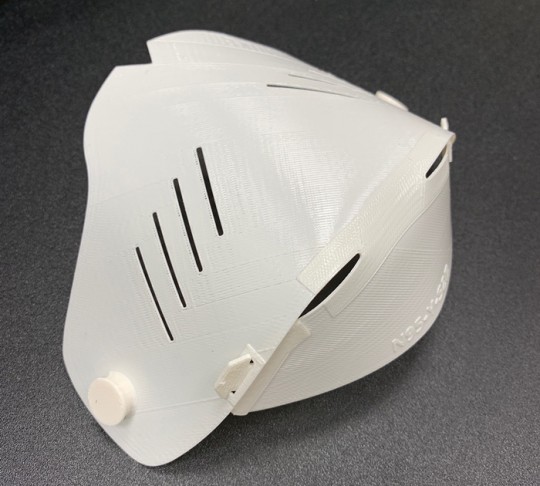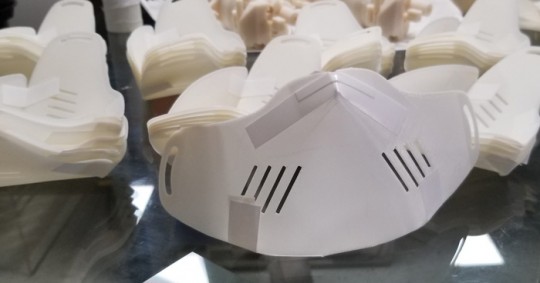Escambia County Company Begins 3-D Printing Face Mask Shields Inspired By Facebook Post
April 7, 2020
As COVID-19 spread across the United States in March, Caroline Shaw knew the pandemic would alter many parts of her job as a sourcing manager at GE Renewable Energy’s wind turbine factory in Pensacola.
What Shaw hadn’t expected was for the virus to present her with a problem that seemed to have no simple solution.
A team of her coworkers had been assigned to screen employees for fevers or other signs of infection, and her job was to keep the team supplied with proper personal protective equipment, especially N95 face masks that limit the spread of the disease. Yet Shaw knew that adding to the small supply she had on hand would mean diverting masks from doctors and nurses who were in even more dire need of protection. “There’s a supply out there for the medical community,” Shaw says, “but we didn’t want to tap into that.”
Shaw hit upon a possible way out while browsing Facebook on Sunday, March 22. A message posted by a friend from her church described a couple in Virginia who were using a simple 3D printer to build plastic shields for protecting disposable N95 masks.
3D-printed mask shields are meant to extend the life of the N95 masks. The concept is simple — by placing the protective mask shield over the N95 masks, it helps to limit exposure of the mask to contaminants. In turn, this offers an opportunity to extend the life of an N95 mask beyond its typical one-time use while supply remains constrained. “These masks are intended to be disposable, but the CDC has guidelines on what to do in crisis situations,” Shaw explains.
As it happened, Shaw knew a lot about additive manufacturing, as 3D-printing is more formally known. Her plant uses an industrial-grade 3D printer to make tooling and custom-made gauges and prototype wind turbine components.
(article continues below photo)
So Shaw got moving. One of the central advantages of additive manufacturing is the speed it can move from idea to prototype to finished product. Shaw hit upon the idea on Sunday, the same day as her Facebook eureka moment, printed a plastic prototype of the N95 protective shield on a simple 3D printer on Monday and gave it to the on-site nurse to try out that afternoon.
Word spread fast. That same Tuesday, Tiffany Craft, a senior repair engineer, had caught wind of Shaw’s efforts and immediately began printing the mask shields. Craft gave the shields to her emergency response team and dropped a couple off at the local hospital. Craft has also been testing multiple materials and prototyping full mask designs to provide protection. Today, she’s helping build a design library where GE teams from around the world planning to 3D-print personal protection equipment can go for insights.
Soon, 20 of Shaw and Craft’s colleagues from around GE joined in the effort, coordinating their contributions to crowdsourcing improvements in the design. They included U.S. and Hungary-based teams from GE Aviation, GE Research and GE Power.
While the initial version worked well enough, the testers reported back several flaws. The tabs that kept the shield in place had a tendency to break off, so the team thickened the tabs and narrowed the slots they fit into on the chin piece. They also eliminated the elastic strap and created a plastic nub where the band of the N95 mask could fit, making the shields easier for workers in gloves to get on and off.
Shaw, Craft and their colleagues aren’t done. While additive manufacturing excels at rapid prototyping, it takes about 40 minutes to make each shield. The next and faster iteration of the manufacturing process could involve water jetting, which uses streams of water laced with tiny pieces of garnet to carve the masks out of sheets of plastic. This method has the additional advantage of being able to form the shield from plastics that are less porous than the ones 3D-printed. This could make them easier to clean by lowering the chance of a virus being able to cling to the shields.
That advance should allow shields to be produced every 5 minutes. After that, the team is looking to move to laser or die cutting, with the goal of being able to produce a shield in just 5 seconds.
Comments
3 Responses to “Escambia County Company Begins 3-D Printing Face Mask Shields Inspired By Facebook Post”






Such foresight is needed by the people in business. They have the ingenuity and access to the knowledge and equipment available to achieve the help needed.
My God‼
There is still hope in the world.
Thank you to all for your remarkable efforts.
Keep up the great work.
The world needs your genius❗
Eternally greatful for the lives you will save.
I’m so thankful for people like Ms.Shaw who are creative, insightful, smart, and problem-solvers! Where would we be without them. Thank you!